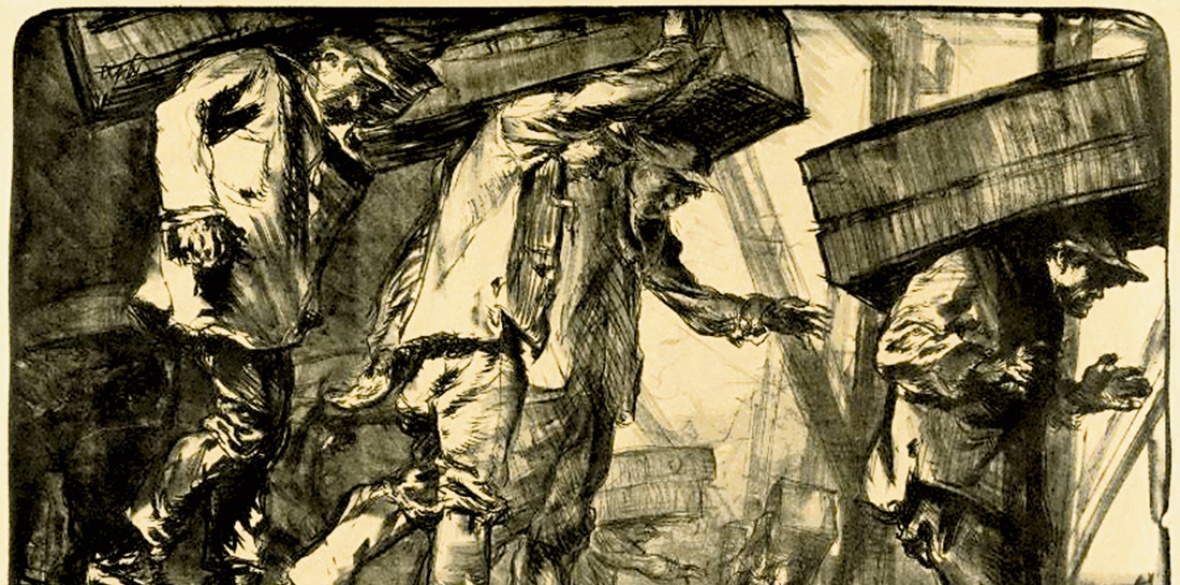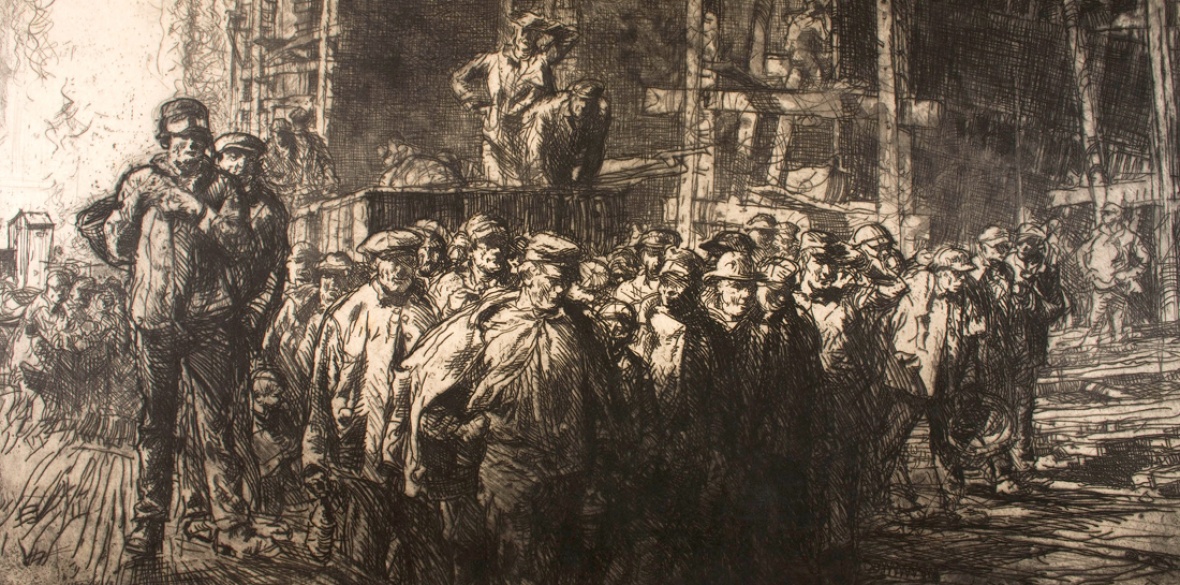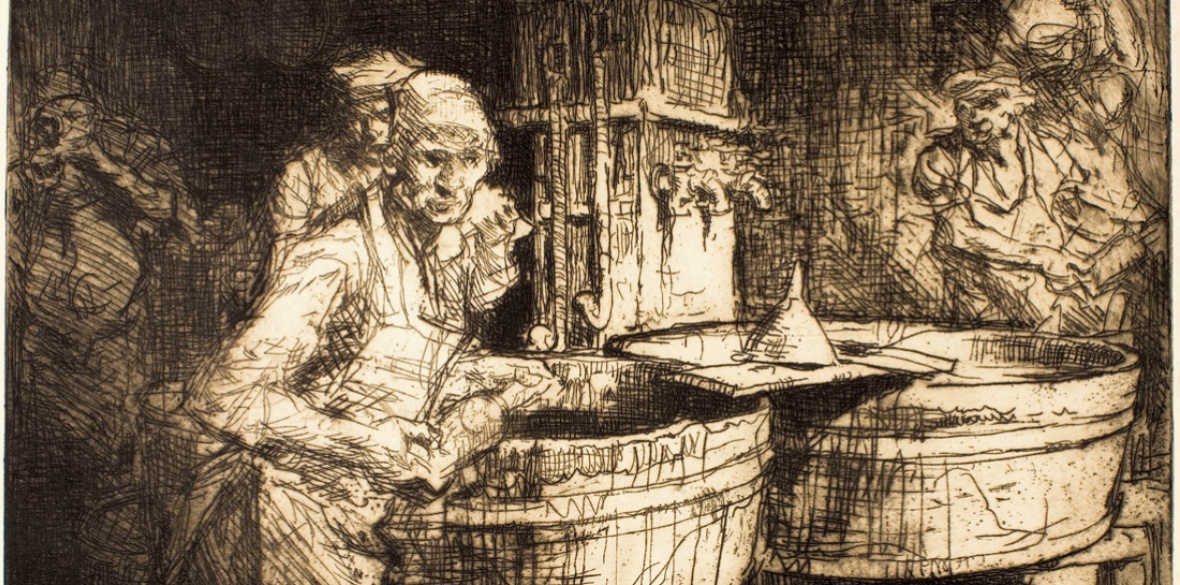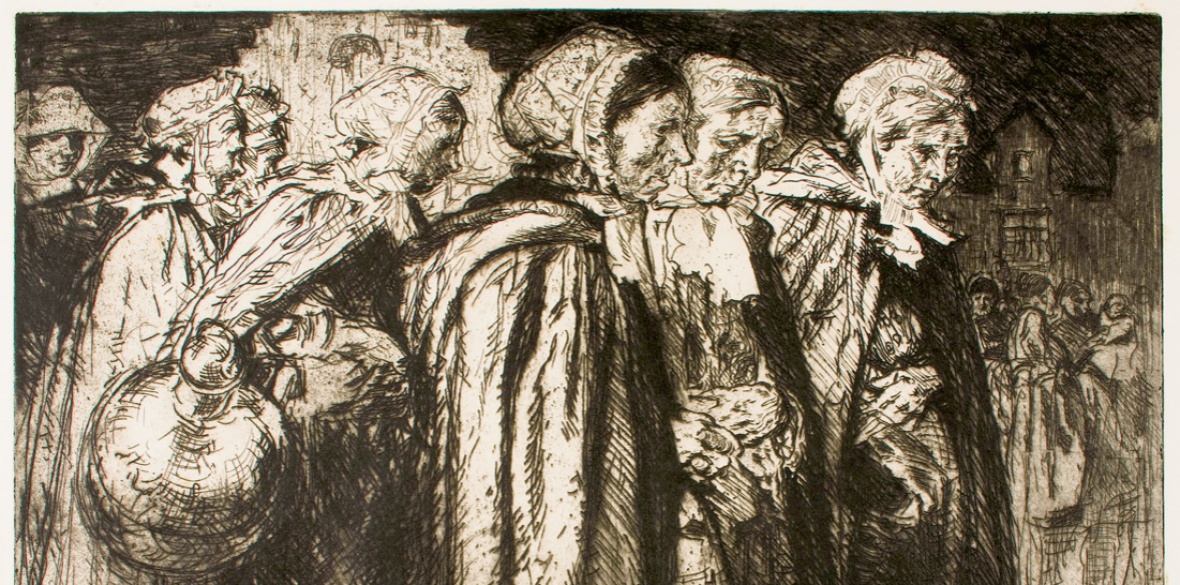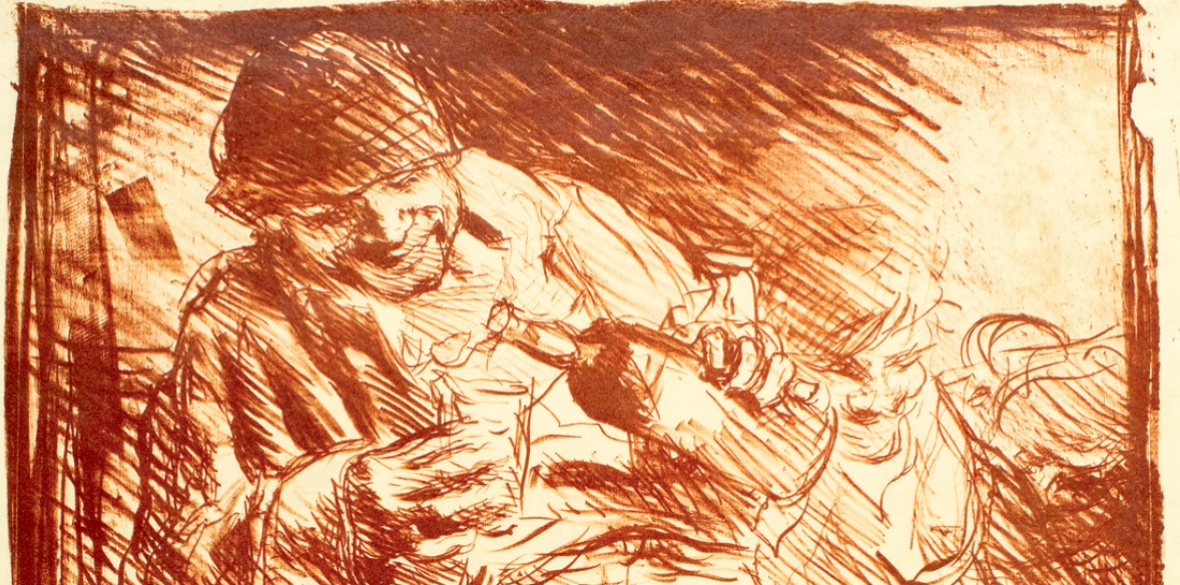This is the last article you can read this month
You can read more article this month
You can read more articles this month
Sorry your limit is up for this month
Reset on:
Please help support the Morning Star by subscribing here
Frank Brangwyn’s Prints
Brighton Museum
Prints and Drawings Gallery
Royal Pavilion Gardens
Brighton BN1
Who nowadays has heard of Frank Brangwyn (1867-1956)? Yet he’d had the greatest international reputation of any British artist, he exhibited with Monet, Whistler and Degas, was feted by the Vienna Secessionists and was praised by Kandinsky.
Born in 1867 in Bruges to Anglo-Welsh, Catholic parents, he grew up in London from the age of eight.
His father was a struggling architect and textile designer close to the Arts and Crafts Movement. He avoided subjecting his son to a stultifying traditional art education, by instead sending him after school to draw from the international artefacts in the recently opened South Kensington Museum (now the Victoria and Albert Museum).
There the lad was informally encouraged by several artists, including the designer Arthur Mackmurdo who insisted on clarity of line rather than on the art schools’ emphasis on delicate tonal gradations.
Brangwyn’s most notable adviser was William Morris who later employed him as a workshop assistant from 1882-1884. The teenage Brangwyn was asked to draw enlargements of Morris’s drawings for wallpaper and textile designs, which furthered his skill at simplifying and flattening forms by using strong outlines.
He no doubt also absorbed Morris’s egalitarian views on the social function of art.
Aged barely 18, full of gusto for experiences, Brangwyn left Morris to travel, drawing the people and places among whom he lived.
Starting with Kent fisherfolk he developed a passion for the sea. In 1888 he worked his passage to Constantinople, Tripoli and the Black Sea, while later voyages took him to Antwerp, Venice, Jaffa, Spain, Rumania, Russia and the coasts of North, West and South Africa.
His travels provided rich subject matter for his art and an income from sales.
By the early 1890s Brangwyn gained a reputation among the international avant-garde for his painting’s vivid colour and exuberant brushwork. He was also a major force in the era’s printmaking revival.
Echoing Morris, Brangwyn had a passionate belief that art should be accessible to all regardless of wealth or social status, so he devoted much energy to the public arts of murals and prints.
He was also active in organisations promoting printmaking which could be more affordable than paintings when produced in large editions.
Twenty-five of Brangwyn etchings and lithographs are now in a rare display at Brighton Museum. Most are large etchings over 80 centimetres wide, intended as independent works of art. The subjects range from a Sussex village shop to London docks, to boot makers calmly practising their craft, to woodcutters dwarfed by sinuous trees which give them a living. But men doing arduous physical work dominates.
In Unloading Oranges at London Bridge, grim-faced dockers balancing heavy wooden crates on their backs, step carefully but quickly down the ship’s ramp. Brangwyn’s fast, spiky scratches into the etching plate convey the enervating dangers of this precarious work, based on his own experience of unloading ships, as well as on his need to quickly note such fast-moving men.
This empathy with the lives of manual workers characterises his prints.
The Drunk depicts a gleeful worker defying social convention. In The Return from Work of 1907 massed artisans and labourers trudge towards us. Some bend their heads in exhaustion, others hold theirs high, glad to get away. The workers’ humanity is emphasised by contrasting their fluid, organic shapes with the rigid linearity of the scaffolding among which they work.
In The Bottle Washers, Brangwyn captures the workers’ need to work quickly or get the sack, partly from accurate observation of their physiognomies and anatomies, as in the foremost figure’s anxious facial expression and stance in arrested motion, but also through inventive almost abstract marks which curl, meander and slither staccato-like across bodies and vats.
Throughout his life Brangwyn continued to feel most at home among manual workers and artisans.
Yet his reputation grew, especially in mainland Europe and the US and from the 1900s he was showered with international honours. These included the French Legion of Honour in 1902, honorary membership of numerous European Academies of Art, and prestigious mural commissions such as the Contemporary Industries panels for the 1905 Venice biennial, now in Leeds City Art Gallery.
But from the 1930s Brangwyn’s critical reputation waned and in 1952 when the Royal Academy granted him the honour of its first ever retrospective for a living academician, the younger generation merely scoffed.
Having ignored the early 20th century maelstroms of Cubism and Expressionism, Brangwyn later became a victim of western aesthetics which prioritised formal innovations and marginalised socially conscious works.
Yet he was a sincere working artist in William Morris’s craftsmanlike tradition and his works conveyed the same humane, progressive values.
This small display of Brangwyn’s prints is a welcome recognition of a neglected artist. His work can also be seen in London’s William Morris Gallery.
Until September 30 2018.

